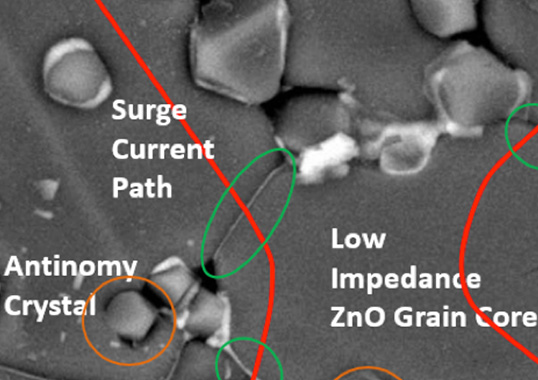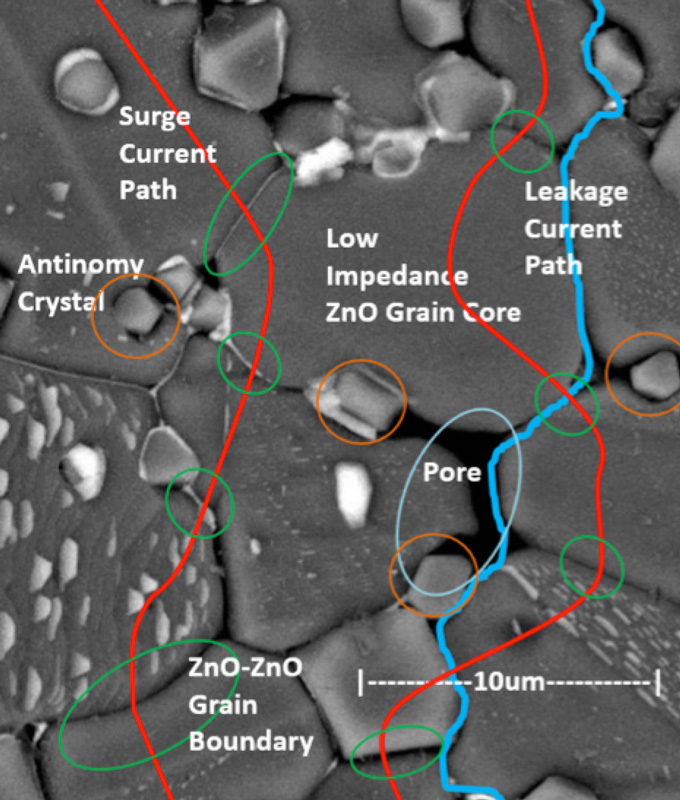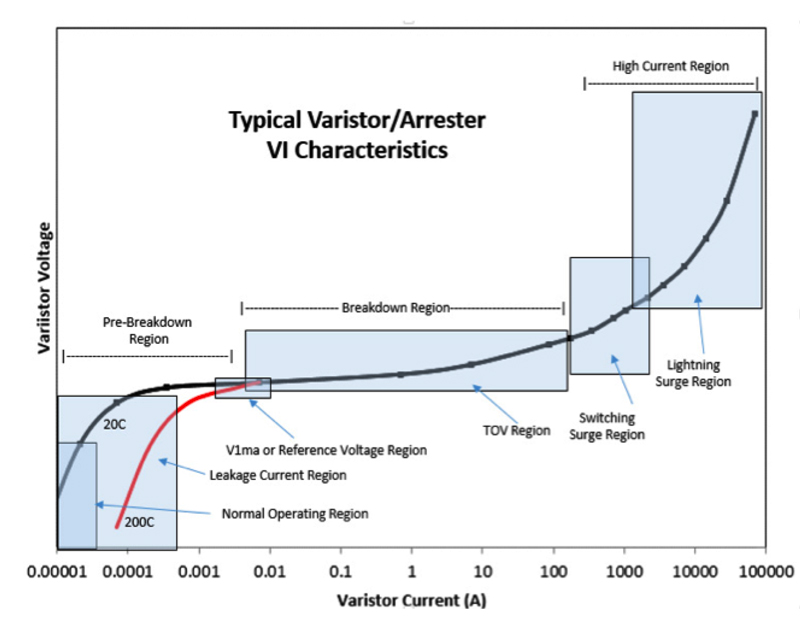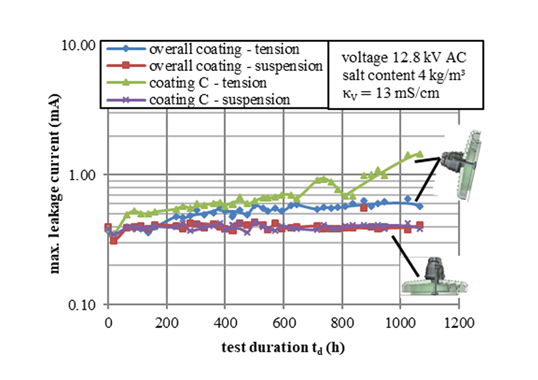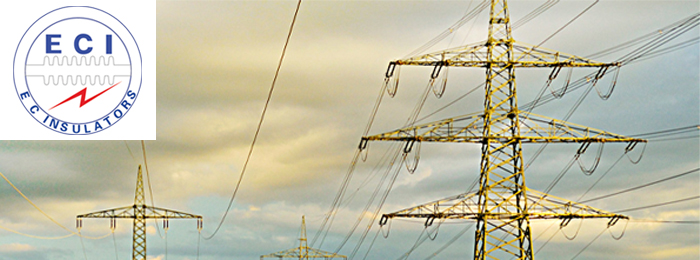Knowledge of the microstructure of a surge arrester’s varistor blocks can help users better understand and predict how such a device will behave in service. This edited contribution to INMR by Jonathan Woodworth explains the key physical aspects of microstructure that can impact performance and how.
Magnifying a section of ZnO disk 5000 times using a scanning electron microscope shows the microstructure that makes up the bulk of a typical varistor. To better appreciate scale, the image is only 50 µm wide or about 1/4 the cross-section of human hair. A station class arrester disc, measuring 60 mm x 25 mm, usually contains about 100 billion such grains.
Varistor experts generally agree that there are three unique parts of the VI curve that relate directly to distinct physical aspects of microstructure. The pre-breakdown region of the curve is associated with the circuitous path (light blue) made up of the spinel phase of the microstructure. Physically, it is the path along the outside and between the ZnO grains, following a disorganized route from one end of the disc to the other. This inter-granular layer is made up primarily of antimony, bismuth and other minor dopants. The breakdown region of the disc is controlled by the highly resistively non-linear part of the microstructure found in the ZnO grain-to-grain boundary (i.e. the green circles). The resistance of the boundary is determined by the voltage stress across it.
In a ZnO varistor, a 3V stress across the junction will cause the resistance of the boundary to decrease significantly. With only a small rise in voltage, resistance drops dramatically and this is basically the varistor’s electronic switch. This physical part of the disc plays a key role in determining breakdown voltage. If there are 1000 junctions between top and bottom of the disc, the breakdown voltage would be approximately 3000 V. Hypothetically, if a disc of similar height had only 500 junctions between top and bottom, it would then have a 1500 V turn on voltage.
The third area of the VI curve that can be associated with a physical characteristic of the disc is the high current region, controlled by the ZnO grain low impedance core. This section is relatively insensitive to temperature. It is also nearly linear and, unlike the junctions, does not change as a function of the voltage across it.
The above is just one model to explain what happens inside a varistor disc over its operational life. There are two areas that may need further development in regard to arrester applications. In the pre-breakdown region, temperature sensitivity needs to continue to improve, even beyond what has already been achieved over the past 20 years. That is why some 10 kA discs are only 35-38 mm in diameter while others have a diameter of 43 mm. The other area of improvement that could impact surge protection would be to lower impedance of the grain cores, thereby also lowering an arrester’s clamping voltage. Temperature of the disc after an impulse would be lower as well. Additional work on this parameter will help move toward the next generation of surge protection.
[inline_ad_block]

